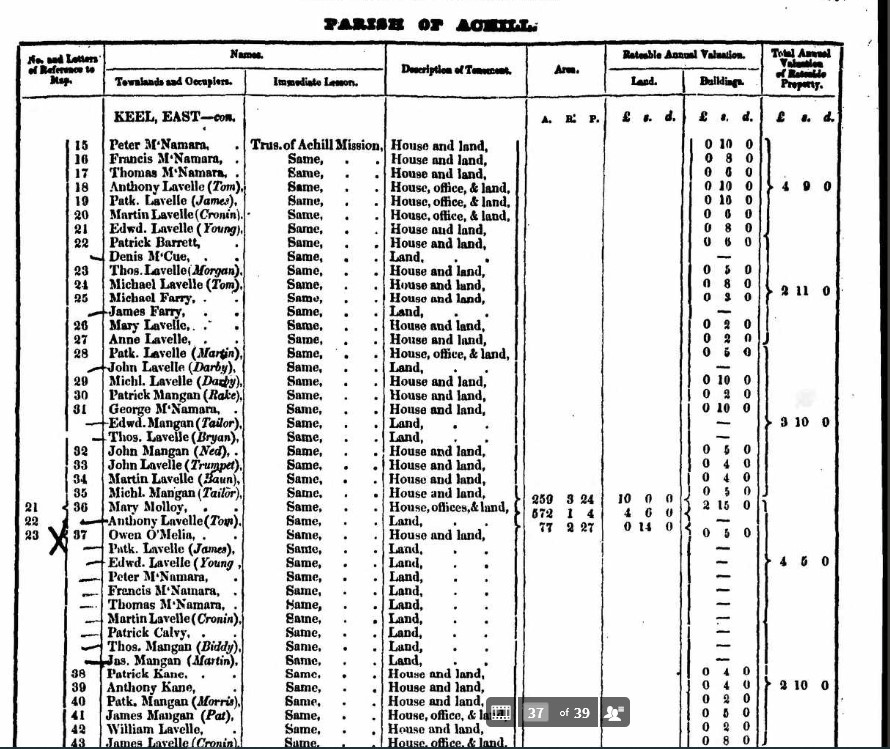Griffith's and Tithe Books
Griffith's Valuation
From the 1820s to the 1840s a complex process of reform attempted to standardise the basis of local taxation in Ireland. The first steps were to map and fix administrative boundaries through the Ordnance Survey and the associated Boundary Commission. The next step was to assess the productive capacity of all property in the country in a uniform way. Richard Griffith, a geologist based in Dublin, became Boundary Commissioner in 1825 and Commissioner of Valuation in 1827. The results of his great survey, the Primary Valuation of Ireland, were published between 1847 and 1864. Up to mid 1852, the Valuation is arranged by county, subdivided by barony, civil parish and townland. From mid-1852, barony is replaced by Poor Law Union.
With the exception of multiple-occupancy tenements in urban slums, the Valuation lists every landholder and every householder in Ireland. Apart from townland address and householder's name, the particulars given are:
- name of the person from whom the property was leased ('immediate lessor');
- description of the property;
- acreage;
- valuation.
The only directly useful family information supplied is in areas where a surname was particularly common. The surveyors often adopted the traditional Irish practice of using agnomens, expecially the father's first name to distinguish between individuals of the same name, so that 'John Reilly (James)' is the son of James, while 'John Reilly (Michael)' is the son of Michael. For similar reasons, occupations are also sometimes used to tell 'John Ryan (weaver)' from 'John Ryan (farmer)'.

Copies of Griffith's Valuation are widely available in major libraries and record offices, both on microfiche and in their original published form. A free online version is at www.askaboutireland.ie.
The valuation was never intended as a census substitute and if the 1851 census
had survived, it would have little genealogical significance. As things stand,
however, it gives the only detailed guide to where in Ireland people lived in the
middle of the nineteenth century and to what property they occupied. In
addition, a huge quantity of material was produced both before publication and
in subsequent revisions, making it possible in many cases to identify occupiers
before the publication date and to trace living descendants of those originally
listed by Griffith. (See Valuation Office Records)
